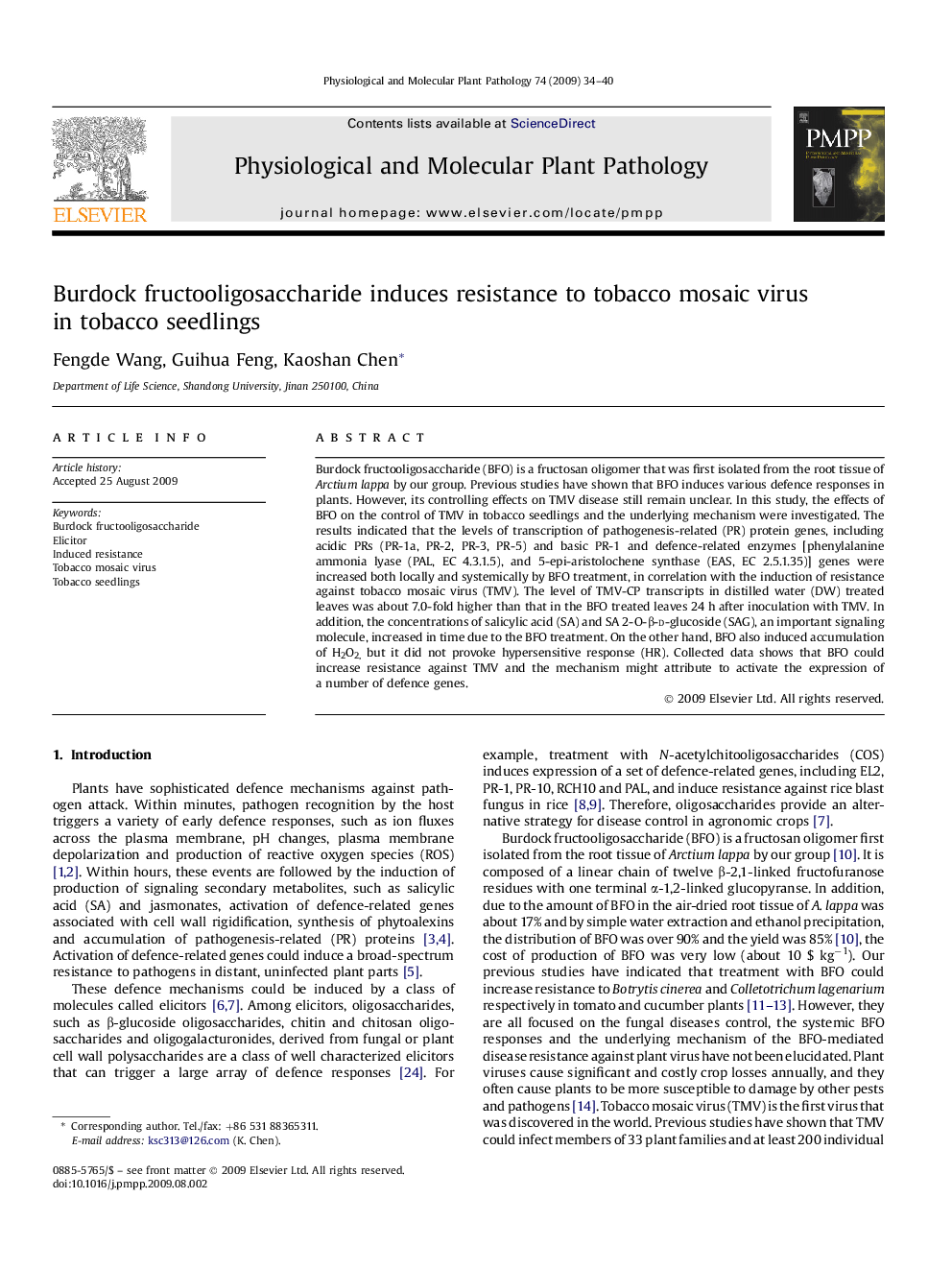| Article ID | Journal | Published Year | Pages | File Type |
|---|---|---|---|---|
| 2836566 | Physiological and Molecular Plant Pathology | 2009 | 7 Pages |
Burdock fructooligosaccharide (BFO) is a fructosan oligomer that was first isolated from the root tissue of Arctium lappa by our group. Previous studies have shown that BFO induces various defence responses in plants. However, its controlling effects on TMV disease still remain unclear. In this study, the effects of BFO on the control of TMV in tobacco seedlings and the underlying mechanism were investigated. The results indicated that the levels of transcription of pathogenesis-related (PR) protein genes, including acidic PRs (PR-1a, PR-2, PR-3, PR-5) and basic PR-1 and defence-related enzymes [phenylalanine ammonia lyase (PAL, EC 4.3.1.5), and 5-epi-aristolochene synthase (EAS, EC 2.5.1.35)] genes were increased both locally and systemically by BFO treatment, in correlation with the induction of resistance against tobacco mosaic virus (TMV). The level of TMV-CP transcripts in distilled water (DW) treated leaves was about 7.0-fold higher than that in the BFO treated leaves 24 h after inoculation with TMV. In addition, the concentrations of salicylic acid (SA) and SA 2-O-β-d-glucoside (SAG), an important signaling molecule, increased in time due to the BFO treatment. On the other hand, BFO also induced accumulation of H2O2, but it did not provoke hypersensitive response (HR). Collected data shows that BFO could increase resistance against TMV and the mechanism might attribute to activate the expression of a number of defence genes.
